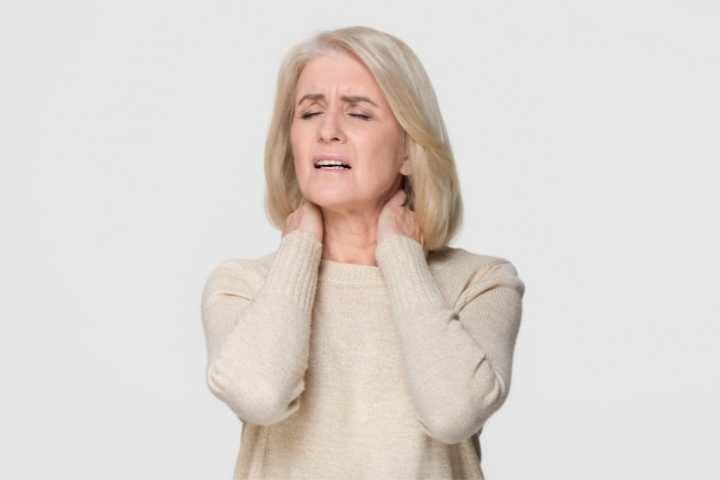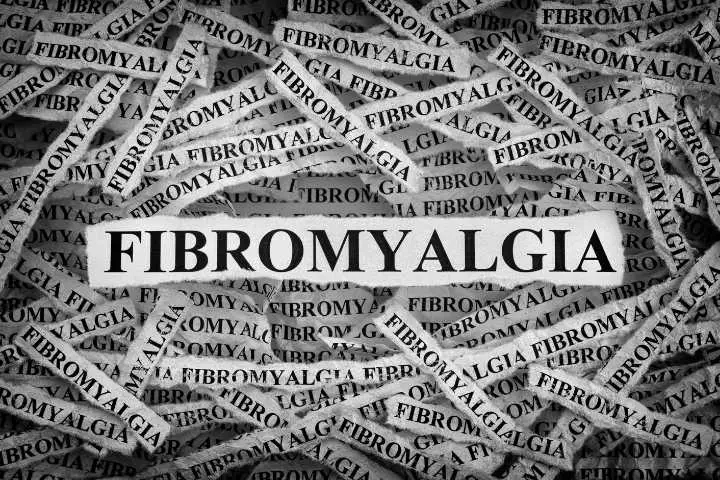When Fibromyalgia happens to older adults, other diseases can exacerbate its symptoms. Here are some home care options for seniors with Fibromyalgia to help relieve pain
Contents
Fibromyalgia or fibrositis is a disorder that causes deep muscle pain in various parts of an individual’s body. When an older adult has Fibromyalgia, they find it challenging to do daily activities like cleaning, vacuuming, driving, or moving from one place to another. Consequently, the disorder affects older adults’ social, physical, and mental health.

There is no specific treatment for Fibromyalgia. But older adults can alleviate pain by changing their lifestyle, diet, and taking some medicines and supplements.
Additionally, maintaining a positive attitude like having a support network of near and dear ones and avoiding negative self-talk helps manage the symptoms of Fibromyalgia.
I will discuss various home care options with Fibromyalgia, which will help older adults reduce joint and muscle pain. You can Continue reading the article for more information.
What Is Fibromyalgia?
Fibromyalgia is a condition that causes pain in muscles and joints all over the body parts in an individual. Additionally, you will have mental stress and emotional stress, adequate sleep, irritable bowel syndrome, tiredness, and depression which significantly affect the quality of life.
Who Does Fibromyalgia Affect And Why Is It So Common In The Elderly?
In the United States, Fibromyalgia affects only 2 percent of people by the age of 20, but it increases to 8 percent by the age of 70.
It is estimated that around 5 million Americans suffer from this disorder, of which 80-90 percent are women, but men and children can also have this disorder.
Some environmental factors may contribute to the disease in older adults. Environmental factors include mental illness like depression, anxiety, eating disorders, loneliness, or a disease that causes pain like rheumatoid arthritis in senior people.

Sometimes emotional trauma or disturbances in sleep can also cause Fibromyalgia in a senior person.
The disorder tends to run in families, so some scientists believe that specific genes are responsible for this disorder. But Fibromyalgia can happen to an older adult without a family history of the disorder as well.
Fibromyalgia can affect people of all ages, but it is most common in middle age and advances when the person gets older.
Fibromyalgia Symptoms
Fibromyalgia symptoms vary widely from one older adult to the other. The doctor cannot immediately diagnose Fibromyalgia because these symptoms are common in other ailments too. Some of the key symptoms are:
- Digestive issues like abdominal pain, bloating, and constipation
- Problem in sleeping
- Numbness in hands and feet
- Headache including migraine
- Dizziness
- Dry eyes and mouth
- Problems with memory
- Sensitivity to light, noise, and temperature
- Muscle and joint stiffness
- Painful menstruation in women
Fibromyalgia In Older Adults
People with Fibromyalgia who are 65 years or older have an extra layer of complexity because of physical changes in their body or chronic diseases that come with age.
Many older adults with Fibromyalgia have constant pain and fatigue all over their body which makes it challenging for them to do activities that require a lot of energy.

Fibromyalgia is more common in older women than men. Some women with intense Fibromyalgia find it challenging to do their daily activities like cooking or cleaning the house. So, senior people need to manage their other health conditions while managing Fibromyalgia.
Diagnosis of Fibromyalgia In Older Adults
Fibromyalgia is diagnosed based on pain in different body parts and other symptoms in older adults.
However, the doctor may take the medical history and ask the senior people about the severity and location of pain and cognitive problems like confusion and memory issues. Lab tests and X-rays help in confirming the diagnosis of Fibromyalgia.
Unfortunately, medical science cannot understand the reason behind Fibromyalgia. So, there is no permanent cure for this disease, but a doctor and healthcare provider can help you to reduce pain all over the body.
Home Care Options For Senior People With Fibromyalgia
Coping with Fibromyalgia can be challenging for most older adults. However, lifestyle changes can help older adults reduce the pain caused by the disorder.
If lifestyle changes are not enough to reduce Fibromyalgia, then there are certain medications that a senior person can take to relieve Fibromyalgia.
I am listing here some home care tips which older adults can follow in their day-to-day life to manage the pain that Fibromyalgia causes.
#1. Listening to Music
Music has a powerful effect on the mood and emotions of an individual. Listening to music helps alleviate muscle pain, stress and increase mobility in older people.

#2. Sleep
An older adult should have enough sleep to manage Fibromyalgia. A well-rested body can combat fatigue and other symptoms of the disorder. Older adults should try to take at least 7-8 hours of sleep a day.
Here are some tips to help improve your sleep cycle:
- Reduce naps on day time
- Reduce alcohol or coffee intake
- Avoid watching mobile or television while sleeping at night
- Limit light and noise during sleeping
- Try to maintain a gap of 2-3 hours between dinner and bedtime
- Go to bed and wake up at a fixed time.
- Take a hot bath with two cups of Epsom salt and little lavender oil just an hour before going to bed.
#3. Exercise
Exercise is one of the best options to reduce the pain and depression which arises from Fibromyalgia. Older adults with Fibromyalgia may find it challenging to exercise at first, but as time goes by, they start to enjoy it, and it does wonders for pain relief and self-confidence.
An older adult can do yoga asanas which involve light stretching, and Pranayama at home. The stretching exercises help increase flexibility and lubricate the joints.
Many researchers suggest that Tai Chi (a term that originates from China and involves slow movements and deep breathing) is one of the good options to reduce Fibromyalgia. Weight lifting at home is another option to reduce the symptoms of Fibromyalgia.
#4. Rest
Older adults who have Fibromyalgia get tired more easily than those without. So fibromyalgia patients should not do too many activities or exercise at a time. It will increase the pain in their muscles and joints. So, moderation is the key to managing Fibromyalgia.

#5. Proper Diet
There is no one diet that a person should eat to reduce Fibromyalgia symptoms. Instead, eating a balanced diet that includes whole grains, protein, and healthy fat in each meal and snack and reducing caffeine and alcohol intake can help manage Fibromyalgia.
Additionally, an older adult with Fibromyalgia needs to take dietary supplements rich in vitamin D and magnesium. But before taking any supplement, you should consult your doctor because the supplements can interact with other medicines and have an adverse effect on your health.
#6. Bath
Several researchers say that balneotherapy (bathing to treat various illnesses) can reduce pain and other symptoms of Fibromyalgia.
A warm water bath can relax the muscles and reduce pain in older adults. You can create a spa-like ambiance at home and soak your body in the bathtub, which will give you both mental and physical peace.
#7. Meditation
Meditation helps in relaxing both body and mind. You can do meditation at home to reduce fibromyalgia pain. You can also try breathing exercises or listen to a CD designed to relax your body and mind at home.
#8. Get A Massage
Massage therapy is an alternative treatment for treating Fibromyalgia. A good massage at home helps reduce pain in muscles and tissues. Additionally, it boosts the production of natural painkillers in the body.
Some studies even say that a good massage helps in improving the mood of senior people. Consequently, they can get better sleep which is also beneficial for Fibromyalgia.
#9. Engage In An Constructive Activity
Stress and anxiety in older adults worsen the symptoms of Fibromyalgia. You should reduce your stress levels by engaging in activities that please you, like gardening or reading novels.

#10. Acupuncture
Acupuncture is a type of treatment in which a small needle is inserted at the trigger points on an individual’s body. An older person can do acupuncture at home to relieve the pain of muscles and joints in various parts of the body.
Wrap Up
Fibromyalgia is a chronic disease that can make the lives of older adults miserable. While there is no specific cure for treating Fibromyalgia, managing the condition involves a trial and error approach.
Older adults can follow the above home care tips to reduce the muscle pain and other symptoms of Fibromyalgia.
I hope this article has given you some helpful information regarding Fibromyalgia. Please don’t forget to share your own helpful home care tips if you are suffering from this chronic disorder which may help others while reading this article!
If you have any further queries related to Fibromyalgia, do drop us a note in the comments section, and don’t forget to share this article with others who are suffering from this disease!
